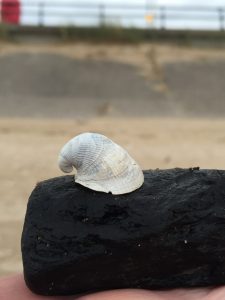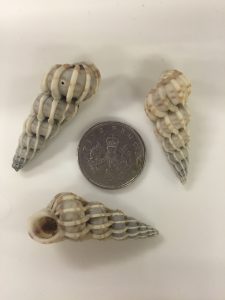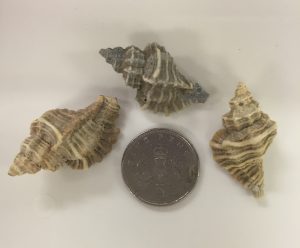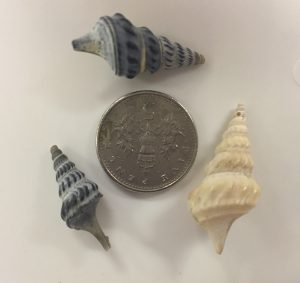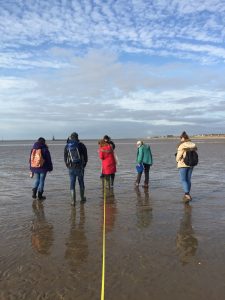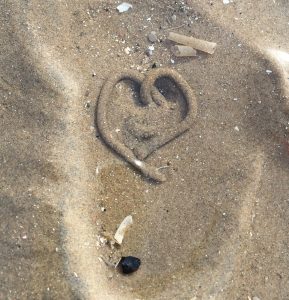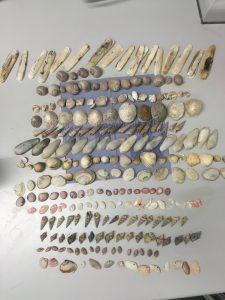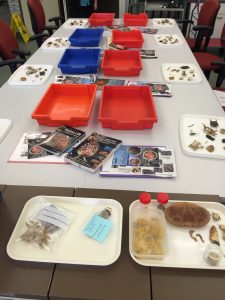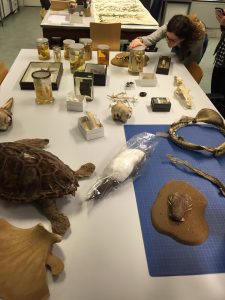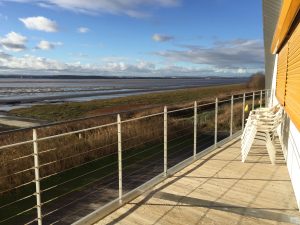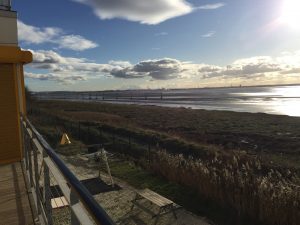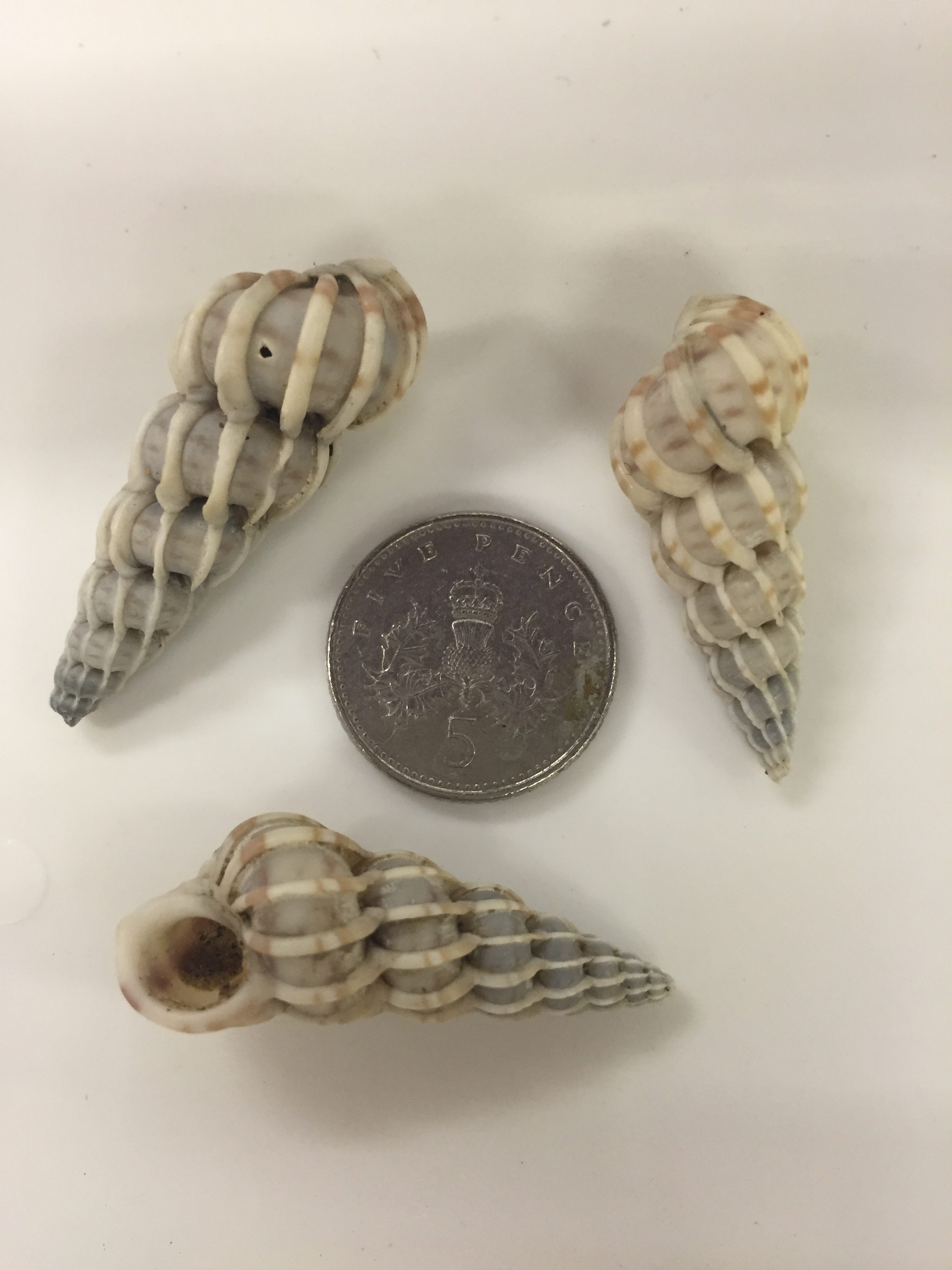
After being away from mudflat madness for a period of three weeks I was very excited to get back out sampling and discovering!
Southport Shell Collecting
After discovering a ‘hotspot’ for shells on Southport beach, the northern tip of our Sefton coast, me and my mentors have been surveying to find less common and unusual looking species! Digging these small shells out of the sand and dense sand mason worm tubes has actually been extremely fun.
One joyous find was this Bonnet Shell, Capulus ungaricus, that was most conveniently found on Halloween!
Other shells we have found, that our less common on our Sefton coast, include;
Wentletrap, Epitonium clathrus
In Dutch its name means ‘spiral staircase’, this beautiful looking shell has whorls (the layers) that are attached only by thin lines of shell. The mollusc that inhabits this shell feeds on sea anemones and corals.
Oysterdrill, Ocenebra erinacea
As its name suggests, these feed on oysters. They do this by secreting an enzyme to break down the shell and then drill through to its prey.
Pelicans Foot, Aporrhais pespelecani
There are only seven known species of this shell, younger shells have not yet grown the ‘foot’ part of the shell and between species the shape and thickness of it varies.
Sperm watch
For the first year ever Sefton Coast has been recorded, by us, as part of the Capturing Our Coast ‘Sperm Watch’. Unfortunately we did not find any sperm puddles so missed the Lugworms release date. We did however count many Lugworms casts on Crosby beach. It is thought that this release is triggered by temperature and/or the lunar cycle. It is important to keep collecting data so that more conclusions can be drawn up!
Beached Marine Life
My first workshop, as part of Liverpool World Museums ‘natural world’ programme, was a great success. Our Beached Marine Life theme meant that I could display all the things that I have been collecting along the coast for months! We looked at shells, seaweeds, egg cases and much more throughout the day. I am hoping to run another one of these courses at the beginning of next year. The timetable for a whole host of workshops will be released soon so I will keep people posted!
Speke Garston and Liverpool Sailing Club
Our most muddy site to survey is Speke Garston, this is an estuary site located along the river Mersey. We were lucky enough to meet members of the Liverpool Sailing Club at one visit and they invited us to look around the club on our return. After an excellent morning of taking samples and surveying the mudflats, we joined them for a tour around their lovely building. We learnt of all the courses they run and how the constantly changing sand banks make things difficult for them. Their balcony acts as the most amazing view point! We cannot thank them enough for their hospitality and cannot wait to keep sampling there!

